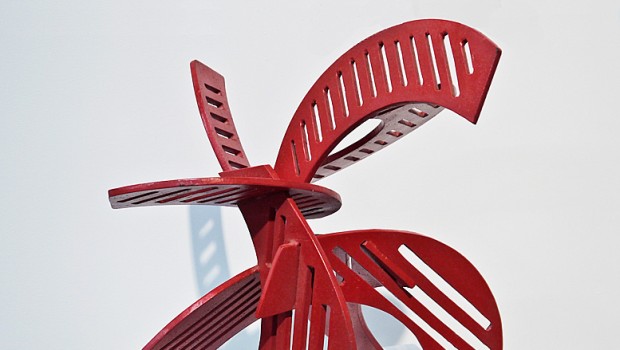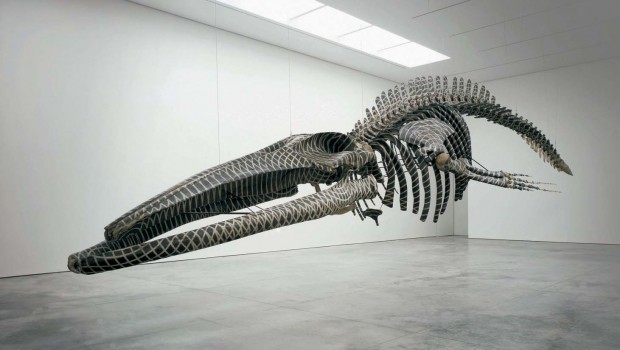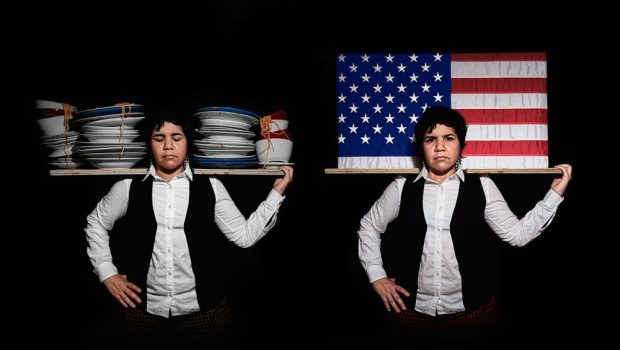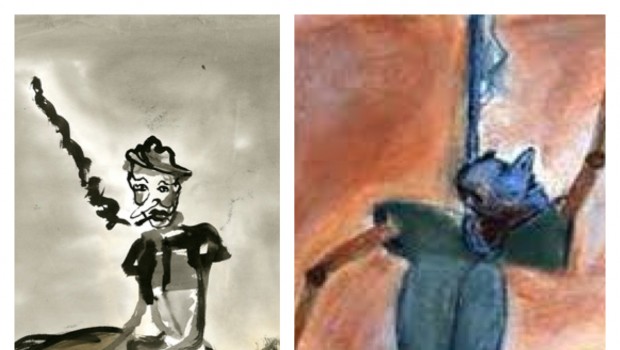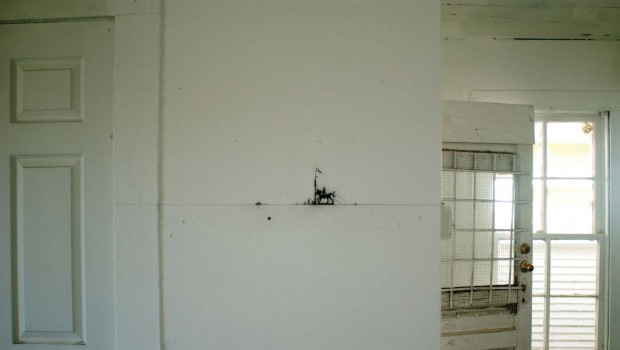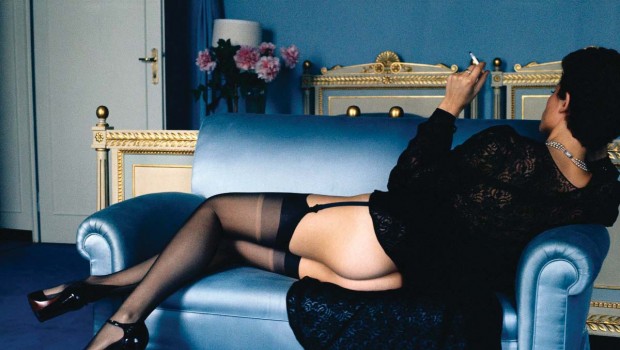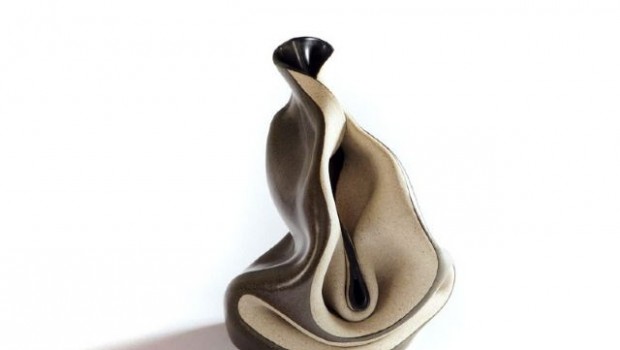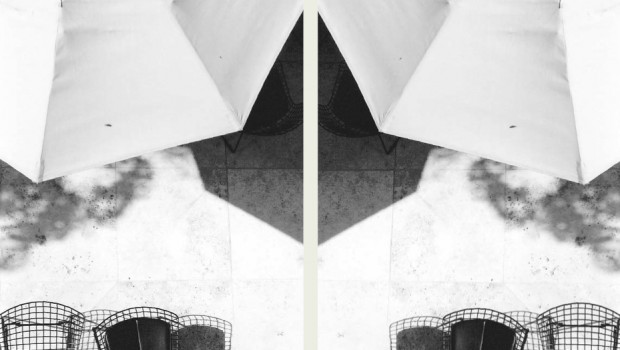Abstraction, Form, And Energy In The Sculpture Of Mac Whitney
John Zotos
In a career that extends over four decades after completing an MFA degree at the University of Kansas, it could easily be said that Mac Whitney is as committed to sculpture as he is tenacious about a hard day’s work with his own two hands. He has lived and worked in Texas since 1969, exhibiting abstract sculpture in more than a few gallery spaces in Dallas and Houston and as far out as Chicago, New York, and Germany. And though a large-scale museum show and retrospective eludes him, it’s only a matter of time before the long overdue recognition of the quality and breadth of his work comes to the fore.
Without a doubt, Whitney’s work began and remains rooted in the modernist tradition of abstraction in sculpture and ranges anywhere between small-scale pedestal pieces to the outdoor monumental work that he’s known for.
The work itself, realized solely by the artist and without the help of assistants, is completely handmade and crafted in various metals ranging from aluminum and stainless steel to bronze. Carrizozo, one of his larger and more recent works, was on display in front of Gallery Sonja Roesch as part of the exhibition. An imposing twenty feet tall, the sculpture presents a perfect example of Whitney’s mature signature style, one that incorporates bent and welded steel elements along with geometric and industrial forms set within an interlocking framework of links that tie the piece together.
How do we categorize Mac Whitney in the context of 20th century modernism? What are his sources, whose work does he respond to from the modernist canon? He has created several bodies of work that have built on, and responded to, his own work and that of other artists. Who were the heavy hitters in sculpture leading up to 1968, when he finished graduate school? I would like to consider examples of work taken from the historical avant-garde as a starting point in placing Mac Whitney’s work.
From the cubist movement in French sculpture, the machine aesthetic of Raymond Duchamp-Villon in Le Cheval Majeur (1914) provides an early example. Here, the form of a horse acts as the subject for an image that combines it to a geometric machine in action. The important thing to consider is how Whitney’s work displays an industrial/machine aesthetic combined with a sense of motion and energy.
Another geometric precedent can be found in the work of Jacques Lipchitz, a pioneer of nonrepresentational sculpture, whose La Joie de Vivre (1927), for example, includes interconnected abstract forms and a primal energy that Whitney’s work also taps into in order to communicate a particular aesthetic vision.
His hard-edge sculptural elements, however, can be traced to the Russian avant-garde constructivist experiments led by Vladimir Tatlin in his various Counter Reliefs (1914-15), and the Monument to the Third International (1917). Whitney’s work is indebted to Tatlin’s objective and industrial structure, but lacks the political and social utopian elements that were the hallmark of constructivism and its productivist aftermath.
But not until post-Second World War abstraction can direct correlations be found that link Whitney’s work to a particular artist. For example, Anthony Caro’s Early One Morning (1962) used found industrial objects and metal sheets which he assembled and painted red, also a favorite color of Mac Whitney’s. Acomparison between this piece and Whitney’s Conatillo (1979) shows a similar assembling of large geometric shapes connected by small linear steel structures in a way that produces balance and a form ofenergy among the constituent parts. Whitney usually, if not always, names his sculptures after towns in Texas, where his studio is located, or in other parts of the United States.
While it’s generally acknowledged that post-war abstraction in sculpture and painting like Caro’s led to the development, in the 1960’s, of minimalism by Donald Judd, Robert Morris, and Sol LeWitt, Whitney’s work, by contrast, refuses to accommodate itself to their strategies. These include the use of serial and repetitive imagery, the thematization of primary structures, Morris’ “specific objects,” and MichaelFried’s notion of “deductive structure” in his essay Three American Painters (1965), a prequel to the rise of minimalism in sculpture.
Rather, Whitney seeks to establish each work as a single entity that reflects the contrasts inherent in his choice of materials and the energy and tension that can best be communicated in an individual work of art. He works through the materials by devising a framework that expands their possibilities, instead of reducing them to base units or cells.
Where the minimalists took their cues from Gestalt psychology and theories of viewer perception, size, shape, and scale in an attempt to explain their art, Whitney retains his faith in experience, material, and continued exploration through making art, not theory. In Notes on Sculpture, Morris wrote of gestalt, or “constant and indivisible” form, that ”simplicity of shape does not necessarily equate with Prize simplicity of experience.” This quote, a type of manifesto of the shape of things to come, can be read as an example of the place where Mac Whitney took his leave of what was happening in contemporary art and continued on his own path.
Consider Whitney’s freestanding sculpture in stainless steel, Yampa (1994) where six triangular-ended polyhedral forms are welded together with a simplicity that fails to obscure the elegance of the design. While vaguely figural, it may seem similar in style to the work of Whitney’s contemporary, Joel Schapiro. Where Schapiro’s work strives toward weightlessness and consistently plays with a human figure/abstract shape tension, Whitney’s Yampa stands on three legs, firmly grounded, and typifies his work of the nineties in that it expresses an austere outcome, not even hinting at the innovations that would enter his subsequent work, such as oblique arcs, angles, and linkages.
In Brazoria (2001) the U-shaped interlocking forms express opposing counterpoints that lock in a potential energy that plays on the viewer’s sense that the parts look assembled and could simply collapse. In this feeling of collapse, we find the tension and the suspension of disbelief required to see what Whitney is doing in these pieces.
The U shape simply seems to lean onto a V, soaring nine feet high to form a sculpture that approaches the monumental. That same year, Whitney seized upon a new way to approach his aesthetic project by interlocking his geometric shapes with an enclosed linkage element. This method grew into a whole series of sculptures along the lines of assembled links. In one of the first of these, Chicota (2001), which is on indefinite loan to the Nasher Sculpture Center in Dallas, the artist took his U and V shaped industrial steel and connected them with an enclosed tear shape, painting it a vibrant red. Like Brazoria, Chicota is almost nine feet high and includes similar forms, with the addition of a link element that achieves a conceptual status, revealing something about Whitney’s work method. Through the modeling of the pieces and the links he can experiment with different versions of the sculpture, so that when he welds the pieces together the finished product rises from the floor and stands upright. This technique approaches the experimental element of chance that was so important for Dada and Surrealism. In this case, the outcome might possibly have been another sculpture altogether, depending on Whitney’s experiments and how the pieces linked together before he made the final choice.
Part of the process includes Whitney’s use of medium scale oil paintings as a therapeutic way of working through his ideas. Several examples of the paintings were included in the show at Gallery Sonja Roesch. The paintings are line-driven, using mostly red and black to render thin shapes that seem to float above an abstract matrix of lighter colors. The illusion of depth found in the contrast of strong geometric lines and a formless background bring to mind the Suprematism from the second decade of the 20th century of Malevich, another foundational figure in non-objective art. The line forms are the boldest, most acute part of the compositions; therefore, a perceptual distance effect enhances the images.
In Tascosa (2011), Whitney gave us a smaller version of Carrizozo (2010), where he chose to steer clear of vibrant color in favor of the rust hues of steel. This piece retains the signature verticality and concentrates the weight at the top end with wide arc shapes atop lesser supports, inverting Carrizozo’s balance. Either way, the pieces are unmistakable examples of Whitney’s signature style and disciplined craftsmanship.
Now in his mid-seventies, Whitney is still committed to an abstract, decidedly formalist approach to art where the form is the content, no matter whether the specific theme of a particular piece is energy-determined by tension in balancing or movement kinetics. He shows no sign of slowing down, and he remains the steadfast analog artist he’s always been.
Posted: July 6, 2013 at 4:01 am


